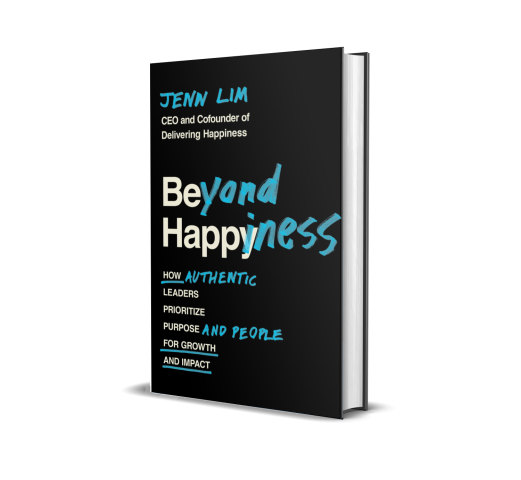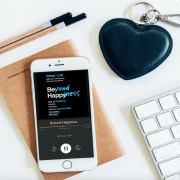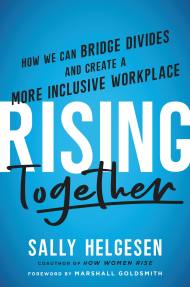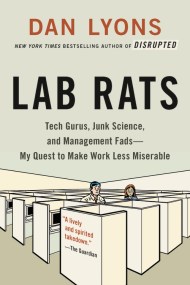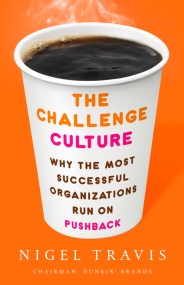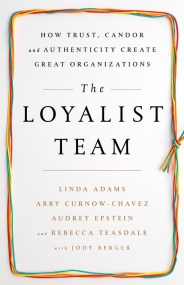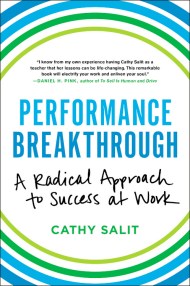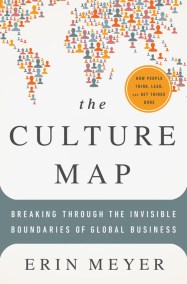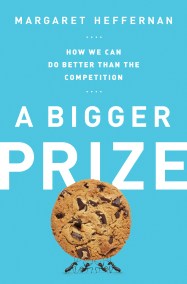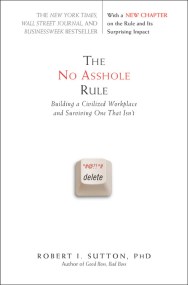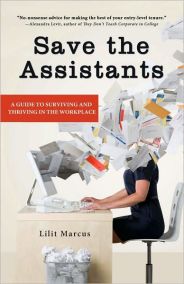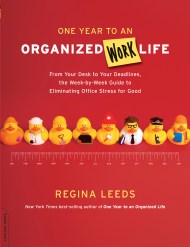Why I Wrote This
Do not fear death, but rather the unlived life.
— TUCK EVERLASTING
I was five weeks out from this book’s deadline when my phone started blowing up one night, in a way that lets you know either something amazing just happened or something on the furthest other end from that. The way it was buzzing nonstop, it felt like my phone was furious, and I had a sinking feeling.
Tony Hsieh had died.
The world had lost a kindhearted imagineer and entrepreneur, and I had lost one of my soulmates and partners in positivity. Having been through death before, most painfully the passing of my dad seventeen years prior, I was familiar with the feelings and the five stages of grief, but this was so different.
His passing sent me into one of the most raging tailspins I’ve experienced. The only salve that brought the occasional calm was the out-pouring of love, support, and grief shared with so many others who had been affected and inspired by Tony’s life too. We couldn’t physically be together because of the pandemic, but as his family, his friends, and the world mourned his loss, I was struck by the feelings of solace and love that can still be felt in a digital age when technology is usually cast as the enemy. In this case, it became a trusted friend.
I’ll be forever grateful to everyone who shared their humanity with me and each other. My friends and family, who took the baton to make sure I was eating and sleeping; my Delivering Happiness (DH) work family, who gave me all the time I needed to grieve; and people far and wide who sent heartfelt messages that helped me get by, one moment at a time.
But there was still a book to write. One that reassures us of the deep meaning in the work we do and that could inspire leaders to understand scientific happiness in the workplace and what’s beyond it. At times, I had doubts that I could pull it off. But as each day passed from a blur to moments of a slight smile tied to a warm memory, it reminded me how the lights eventually get brighter again and I realized the irony of it all. Tony’s death—with the heavy media storm and cynical, at times heartless, questions—was testing all the lessons I’d learned about highs, lows, happiness, and beyond.
On some days, it was impossible to focus because his passing was so public. On other days, I’d look at the picture of me and Tony on Mount Kilimanjaro and hear his words: “Anything is possible.” I wasn’t sure how things were going to turn out, but I did know Delivering Happiness was a part of Tony. Overnight, it had transformed from a company we’d cofounded ten years before to one of the ways that his legacy would live on. I was reinspired to live out our company’s purpose with even more impact on the world.
As things cleared in my head, I knew the core messages of this book—the relationships among purpose, people, and profits for growth and impact—were still the same as before he died. Even though the world without a physical Tony would never be the same, the “why” behind this book and the reasons it had to be written grew in its strength.
As Buddhists believe, and American political journalist Norman Cousins wrote, “Death is not the greatest loss in life. The greatest loss is what dies inside us while we live.” We have no way of telling what forms our bodies and souls will transition to next, so we might as well live fully and wholly in the here and now, or, as Tony liked to say, unapologetically true to our weird selves.
I learned this when my dad died, and now that Tony’s passed, it couldn’t be a bigger truth to me. We all eventually lose the things we love, including ourselves, but if we can accept this truth, the why behind our existence is clear: holding space for ourselves and others to be truly who we are while feeling belonging and love. If there’s anything in the world that can slow the metastasis of divisiveness, it’s the celebration of what unites us. We all want to love and be loved while being true to our (weird) authentic selves, whether at work or in life.
This book is about understanding the authentic self in our work/ life journeys. It shares how we can get back to the core of who we are and live the purposeful life we want through the work we do every day. It shows how we can adapt to unknowns by applying Purpose + Values to navigate the future. It shines light on some of the defining questions of our time: How can individuals have a greater effect on business growth and success? How can companies modernize org design so we can each do our best work because we love it? How can we find meaning and create a positive impact in our work and communities— regardless of the challenges the world throws our way?
During our Delivering Happiness book tour back in 2010, Tony and I had one of our many random conversations that turned out not to be so random at all. Things still felt surreal as we were traveling around cross-country with our book team on a bus we had bought from the Dave Matthews Band, our goal to share the message and one of our core values: inspire and be inspired (and have fun while doing it). We were excited that the book was doing well, but it was also one of the most stressful times in our lives. Being on the road, trying to deliver happiness to others, took a toll on everyone on that bus.
In this particular conversation, both Tony and I acknowledged there was something missing in the book. It talked a lot about the ups and downs that he and Zappos had to go through, but it was focused on the company level. The book showed that happiness as a business model can sustain a company, but it didn’t highlight that the business model really has to start with the sustainable happiness of the individual. It was obvious to us that healthy companies prioritize culture and purpose, but in order to get there, people have to first know their personal purpose, then connect it to why they show up at work every day.
While Tony and I didn’t predict that culture and purpose would eventually become common words in boardrooms and lunchrooms, that conversation seeded one of DH’s biggest learnings between then and now: that the building blocks of a company’s sustainable success start with every individual member’s Purpose + Values being aligned with those of the company.
For the next ten years, in workplaces around the world, the DH team and I gained a deeper understanding of how true systemic change comes down to those building blocks that enable companies to grow. Creating this bridge between the company level and the individual level has been one of our main focuses at DH for years now. That means leaders at all levels need to get real with themselves first. Whether you run a Fortune 500 company, manage multiple teams, own a small business, or sit on the front line as a receptionist, we can all be leaders of our own lives at work. If we choose to be.
To illustrate this point, I love sharing Rachel’s story. She’s a receptionist at a doctor’s office in Manhattan. Genuinely caring, with an authentic smile to greet even the grumpiest New Yorker having a bad day, she’s the highlight of every patient’s visit. People wonder how someone could love her job that much and be unaffected by other people’s moods and the inevitable hassles of the work. There are many reasons, but one of them is the title she chooses to print on her business card: director of first impressions. She knows how her work matters to the organization and absolutely owns her role, and everyone can tell she loves it. She is a leader of her life at work.
Companies will go through their natural ups and downs, but we also need to own our personal highs and lows, light and shadow sides, strengths and blind spots. As leaders, as much as we need to work on the company, we need to work on ourselves too. When it all aligns, we see the beauty of a ripple effect that starts from the individual and ripples first to the team and company, then to the community of customers, partners, and vendors. And as an added bonus, when we do this right, the society and planet that we live on benefit too.
The conversation Tony and I had in 2010 is where this book is taking the baton. I’ve often said Tony was tenaciously true to himself, which was likely the reason we connected so well. We both thought authenticity to ourselves and others was one of the most important values to live by. It grounded our relationship a majority of the time and annoyed the hell out of us when it didn’t. But our mutual respect and trust came from that shared value. When I was trying to make sense of what to think, what to write, and what to process after he passed, I realized I already knew where I had to take the baton.
Tony used to bring up the concept of “greenhouses” from time to time. It was his belief that true leaders were building greenhouses for others to grow in rather than trying to be “the tallest plant.” He’ll forever be one of the best greenhouse architects the world has seen—one of the many legacies he lived and left behind.
Tony proved to be the expert architect for others, but what does it mean to build greenhouses for ourselves too? How can we truly be our- selves at work and in life, grow our greenhouse and others? How do we create sustainable environments where we can all meaningfully connect and feel a sense of belonging? What people ecosystems can we cultivate to bring happiness, embrace wholeness, and nurture new ways to feel more human at work?
DH’s work has always been around work/life integration, and now it’s time to realign our personal and professional lives in even more pro- found and purposeful ways.
What you will find in these pages is an explanation of why focusing on people is the way to futureproof your work and your orgs. This includes an overview of our latest model, stats and stories (because you need both), how the model affects the bottom line, and how the new ROI is your “ripple of impact” (not just your return on investment). That’s Part I. The next three sections walk you through how to create people ecosystems no matter what leadership role you have—whether you lead the whole company, your team, or your own life. Part II focuses on the ME or the individual, Part III on the WE or the team and org, and Part IV on the immediate COMMUNITY, with ripples going all the way out to our SOCIETY and PLANET in Part V.
There are lessons I’ve learned along the way, practical exercises to help you bring inspiration and purpose to work and life, and stories of globally recognized brands like Starbucks, Toyota, and WordPress transforming their businesses during a pandemic, as well as of folks around the world finding their purpose in companies of diverse sizes and industries. I also tell stories that spotlight personal ups and downs in the hope that you’re inspired to live a more fulfilling life, both at work and outside it.
I know we can all attest that life can be fucking hard. Sometimes in unrelenting ways that make us wonder if the waves will ever stop crashing. At times we question if there’s enough strength left that our legs won’t give out under us, let alone enough to keep us grounded. But I also know that if we do the work, for ourselves and others, we’ll be more than OK. We’ll know what it means to truly live and not fear the life unlived.
I hope this book inspires and supports you in building your own greenhouse and enables you to help others build theirs. I hope it supports people, teams, and companies in doing the reflective work required to understand highs and lows so we can get to a place where we’re showing up as our authentic selves. By staying curious, with courage and calmness, I hope to show how we can grow to love ourselves and each other, and the work we do every day.
PART 1
WHY DOES THIS MATTER?
"Everybody has a plan until they get punched in the mouth."
—MIKE TYSON
2020: The Reset on Humanity (and Ourselves)
When the context of the world instantly changed in 2020, and we all had to adapt, fast, it was obvious that shifts were happening at work
and at home like never before.
We all moved to Zoomland overnight, closets became our conference rooms, and parents realized TikTok wasn’t an app for telling time. Without a glimmer of light at the end of the tunnel, it felt like 2020 wouldn’t stop 2020-ing and every day felt like we were waking up on Blursday.
Over the course of a year, the button that reset humanity was pushed a few times, and there was no turning back. The income disparity gap widened, hundreds of millions of people around the world lost their jobs and homes, and people lost more and more loved ones as the relentless virus kept spreading. The world saw the haunting realities of racism and social injustice, climate change, and elections that threw back the curtain over how divided our countries and their citizens really were. And it seemed that we were all left to fend for ourselves.
Historically, sharing a common enemy is one of the best ways to bring people together. Before 2020, I would’ve considered “global pandemic” to be a pretty safe bet to be that enemy. Instead, it just revealed how fractured we were. As 2020 roiled on, the world showed us too many different enemies to choose from, and people struggled to agree on what the real “enemy” was. Real or fake news. Science or superstition. Populists or elites. Left or right. We were confronted with a spectrum of tough decisions in an increasingly uncertain and complex society. Questions like: “What do I stand for? What would I fall for?” (couldn’t resist the megafan of Hamilton in me) made us eventually realize the answers weren’t binary. The volume of opinions kept getting louder, and the strength of even the best relationships between friends, family, and neighbors was being tested—let alone relationships between enemies.
But we also found things that united us—simple kindnesses, the power of community, and a golden age of creatively hilarious memes. The reset button helped us pause even as life continued. Parents who used to travel a majority of their time got to hear their kids’ first words or attend their high school graduation in person, most likely in the luxury of their own living room. Many of us rediscovered nature and came to viscerally understand why a hug or a handshake is different from an elbow bump or air hug. But the biggest pause was found in the gravity of the questions we were asking ourselves.
Take a moment to reflect. . . where were you in 2020 BC (Before COVID)? What questions were you asking yourself after it came into your life? Perhaps they sounded something like these:
- - What are the things most important to me, and why do I do anything but focus on them?
- - Am I living an authentic life that’s true to myself and not what others expect of me?
- - How do I know if I’m spending the minutes of my day meaningfully?
Or maybe you were thinking in the stark terms that Steve Jobs used when he framed it so well. In his famous 2005 commencement speech at Stanford University, Jobs said that he looked in the mirror every morning and asked himself, “If today were the last day of my life, would I want to do what I’m about to do today?”1
People were dying, and life-and-death questions entered most of our minds in some form or another. Being in lockdown or sheltering in place gave us ample time to consider what clarity could mean amid chaos. And it became clearer to a lot of people what was worth expend- ing energy on and what should be tossed in the bullshit bin.
SURPRISE . . . IT WAS COMING ALL ALONG
Some people were shocked at the state of the world that was laid bare by COVID, doubting they even knew what reality was anymore, but others had predicted that a set of massive changes was coming. They might not have guessed that the enormity of it all would be crammed into an extraordinary year, but they knew something was imminent. Futurists like Vernor Vinge had predicted it decades before. In his 1993 article “The Coming Technological Singularity,” he wrote about how the world was changing faster than ever: “We are on the edge of change comparable to the rise of human life on Earth.”2 Unsurprisingly, futurists were already making projections about what this new internet thing would do, how limited the resources on our planet actually were, and how our globally changing demographics would affect us all.
The World Economic Forum calls the period we’re living in the Fourth Industrial Revolution.3 We’ve seen an evolution of the Industrial Age roughly every hundred years—from mechanization and steam power in the 1800s to mass-production assembly lines in the early 1900s to automation and computers in the late 1990s, which led to the Internet of Everything and distributed networks today. The only difference between previous revolutions and our current one is that the change we’re now seeing is exponential, with rates and frequencies faster than we’ve ever seen before. It took seventy-five years for the telephone to reach fifty million people in the world. Guess what took only nineteen days to reach the same number of people in 2016?
Pokémon Go.
Although big changes were looming, it didn’t mean we had to expect doom and gloom. Peter H. Diamandis, another futurist and author of Abundance: The Future Is Better than You Think, believed technology would liberate us in such a way that resources could go from scarce to abundant, and that abundance wouldn’t just provide the world with lives of luxury, but with lives of possibility instead.4
By “possibility,” these futurists weren’t just referring to coming up with solutions to poverty and climate change to help a billion people at a time; they were also thinking about those existential questions that I mentioned before. Whether it’s in our scientific journals or the latest sci-fi stories, there’s a growing belief that there will come a time when AI will allow our consciousnesses to live on even after our bodies quit. If you’re into the hypothesis as well, just don’t forget to upgrade your iCloud and Google storage accounts to the Eternity Package before it’s too late.
But to get to that point of possibility, do humans need to evolve exponentially too? Most would say that in itself is impossible. The human race has been evolving at a pretty steady rate since we appeared on this Earth; it just doesn’t make logical sense that we would wake up one morning and start evolving as quickly as technology is developing. The documentary (or, some might argue, very realistic horror movie) The Social Dilemma shows what our physiological inability to evolve as quickly as technology means for our daily lives today. What The Social Dilemma reminds us is that we’re not getting anything for free and that what we’re paying is much more important and valuable than money—it’s data about us, our kids, and even our pets that is feeding into something that’s beyond our control. At the same time, technology lets us reconnect with friends, meet the love of our life, or express ourselves. The dilemmas we face of weighing these risks are real and with us every day.
So if technology is outpacing us, what is left for us to do? Whether at home or at work, we have little choice other than to double down on the things that computers might not ever be able to do.
Things like be empathetic. Exercise creativity. Act with a sense of ethics, inclusion, and equity. Keep solving problems through a lens of humanity as situations get more unpredictable and unknown. Feel happiness and sadness and every emotion we can possibly experience, knowing they will pass. As humans, let’s do what humans do best. Be human.
By now, we expect that AI and automation will continue to dis- rupt the way we live and work forever. The prospect is a little terrifying given how movies have planted the seeds of the idea that it’s just a mat- ter of time until the role of who’s boss flips. Instead of Alexa and Siri responding in their singsongy voices it’ll be HAL 9000 from 2001: A Space Odyssey with the persona of Hannibal Lecter saying, “I’m sorry, I’m afraid I can’t do that for you right now. I’m virtually having an old friend for dinner.” While it may seem like tech is slowly overtaking our lives, the more automated we get, the more we should be reminded that we have a choice as to what we believe in and pray to—perhaps it’s nature, some form of spirituality so we can better understand this world and what might come after, or the inner voice that speaks to us from within. Or, more likely, a combination of them all.
Sometimes we forget that the driving forces behind AI and auto- mation are also people. People who want to feel love, be loved, and might show up as the villains in the nextmovie sensationalizing the notion of AI taking overthe world. Butif we do whatwe’ve been doing so far—staying smart with empathy, intentionality, and vigilant ethics as the world progresses—we won’t have to worry so much about Alexa, Siri, or being at the beck and call of HAL.
Even though it’s daunting to keep up with the unpredictable, expo- nential change around us (things we can’t control), it just highlights that it’s never been more important to control what’s within us—our beliefs, purpose, values, and ability to adapt.
